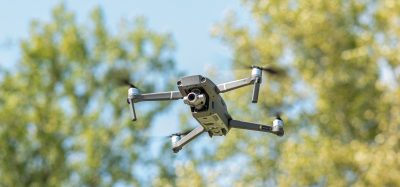Foreign Object Debris (FOD) detection research
Posted: 28 March 2008 | Jim Patterson Jr, Airport Safety Specialist, FAA | No comments yet
The Federal Aviation Administration (FAA) is conducting research to evaluate various technologies capable of detecting Foreign Object Debris (FOD), that may have fallen onto a runway or taxiway. The research being conducted under this program is very aggressive, calling for the installation of different detection technologies at major United States airports, along with a very thorough evaluation process that assesses performance under a full range of weather and operational conditions.
The Federal Aviation Administration (FAA) is conducting research to evaluate various technologies capable of detecting Foreign Object Debris (FOD), that may have fallen onto a runway or taxiway. The research being conducted under this program is very aggressive, calling for the installation of different detection technologies at major United States airports, along with a very thorough evaluation process that assesses performance under a full range of weather and operational conditions.
With the data collected from these evaluations, the FAA will be able to develop performance standards for FOD Detection Systems. It is expected that the implementation of these types of technologies will greatly enhance operational safety at many large airports in the United States.
The term FOD is typically used to describe any small item, particle, or debris that does not belong on an airport pavement surface, and has the capability to cause harm or damage to an aircraft that passes by (See Figure 1). In many cases, FOD is associated with military operations, where it is not uncommon to hear of ‘FOD Walks.’ Here, ground personnel search an area by walking shoulder-to-shoulder across the pavement, stopping to pick up the smallest of pebbles or debris that may have found its way out onto the aircraft operations area. The goal is to remove all particles that could potentially hit an aircraft or even be ingested by an aircraft’s engine; an event that no pilot or airport operator wants to happen.
For civilian airports, the same concern for FOD exists, but the resources to conduct a military-style FOD Walk just do not exist. Instead, airport operators are limited to regularly scheduled ‘airport inspections’ where they patrol the airport surface, visually looking for anything that might be out of the ordinary, including the presence of FOD. As a backup, the airport operators may receive reports from pilots or from air traffic control that a piece of FOD has been seen on the airport’s surface. In many cases however, the location and type of FOD are given incorrectly, so the airport operator may spend a significant amount of time searching the reported area. Weather, darkness, and traffic are all components that further complicate the airport operators search for the piece of FOD, thus resulting in what might be viewed as a hasty search; which on many occasions, comes up empty.
It has been estimated that FOD damage costs the aerospace industry over $4 billion (US) per year, mostly in the costs associated with engine damage and loss of use of the aircraft. FOD damage to aircraft happens all of the time, but typically does not receive the same level of attention as an actual accident. The most noted FOD related accident takes us back to 25 July 2000, where 100 passengers, nine crew members, and four people on the ground were killed when Air France Flight 4590 crashed after departing from Charles de Gaulle International Airport near Paris. The aircraft had run over a piece of titanium debris on the runway, that had fallen from an aircraft that took off about four minutes earlier. Investigators discovered that the piece of debris on the runway had shredded a tire, causing the accident. While catastrophic accidents such at this one, that have been directly attributed to FOD, are very few, the FAA has recognised that there is still a need to address the problem of FOD to at least minimise damage to aircraft, and more significantly, to prevent another accident from happening.
The FAA’s Airport Safety Research and Development Sub-Team, located at the William J. Hughes Technical Centre in Atlantic City NJ, are evaluating several new technologies for debris detection. These technologies have the capability to detect and report the presence of FOD on a runway surface, greatly enhancing the airport operators’ ability to locate and remove the debris, before it damages an aircraft or causes flight problems.
Under this research program, the FAA selected four different technologies to participate in the evaluation, each of which would be installed at a major US airport for a 12 month evaluation period. Selection criteria were based on an initial capability presentation by the vendor, prototype demonstration, and their ability to demonstrate overall maturity of their system. Fully developed systems that were ready to be deployed were the primary area of interest, so that the long research process could be initiated immediately.
Due to the very labour intensive process of evaluating the different technologies at four different airports, the FAA looked to their Centre of Excellence (COE) Program for assistance. The COE Program allows qualifying universities to perform investigative research projects such as this, along with the FAA. This allows graduate level students to gain experience working in aviation related engineering fields. All of the research efforts are conducted under the close supervision of an experienced professor, to ensure consistent, reliable, un-biased results. For this particular project, the University of Illinois’ Centre of Excellence in Airport Technology (CEAT) was chosen to assist in the execution of the research effort for FOD Detection. The University of Illinois has an expanse of knowledge in evaluation design, execution, and reporting, along with specific experience in several airport safety related fields.
The evaluation process, designed by the FAA and the CEAT, included a multi-step approach that would allow researchers to challenge each technology on their ability to consistently detect; sample FOD items, FOD items of different size/shape/consistency and finally, their ability to find common FOD items on a runway, just as if they were being operated in the ‘real world.’ Researchers planned to evaluate each technology through a period of 12 months, to ensure that sufficient inclement weather conditions were captured, including snow events, where the technologies will be particularly challenged to differentiate between actual FOD items and accumulating snow.
The four FOD detection systems selected to participate in this evaluation included: a millimetre wave radar system, developed by UK based company QinetiQ Ltd, a combination radar and high resolution camera system, developed by the Israeli based company XSight, a mobile millimetre wave radar system, developed by a US based company called Trex Enterprises, and finally, a high resolution intelligent vision system, developed by a Singapore based company called Stratech.
Personnel from the CEAT and FAA, regularly travel to each of the four respective test locations to conduct the evaluation activities. Initially for the first test, a set of calibration targets are placed at pre-selected positions along the runway surface. The system is then allowed to scan the runway to look for the calibration targets. In this test, the general system operation is evaluated to confirm operational status and consistency in repeated detection of the calibration targets. Month after month, the same targets are placed at the same location. The system should demonstrate repeatability from month to month.
In the second test, a standard set of FOD items (items include pieces of airport signage, rocks, chunks of pavement sealant, fuel caps, catering items etc), are placed on the runway surface at pre-determined positions (See Figure 2 on page 23). While the positions of the FOD are repeated each month, the particular item of FOD at that spot is randomly changed. For example, a fuel cap at position A1 on the first month would be switched to position D3 the next month. Position A1 would then have a different item placed on that spot during the next month.
Testing proceeds with rotation/detection cycles, where each item is rotated in-place approximately 45 degrees, to test the systems ability to detect various items of FOD, regardless of their orientation to the detection sensor (See Figure 3 on page 23). For example, a long piece of tubing would have a very broad detection surface when viewed from the side, but would only appear as a small circular item if viewed from either of the two ends. Rotating each individual item gives researchers a complete understanding of how the system is able to detect various items at various locations, at various orientations. The detection performance is assessed based on how well the system can find the FOD items, and how it handles the various FOD orientations.
The final test is what researchers call ‘blind testing’, where unknown items are placed at unknown locations on the runway surface. This is the closest researchers can get to evaluating the system in a real world environment, since the system will not know where to look, and it won’t know what to look for. Researchers randomly select a series of FOD items, and place them at various random spots along the runway surface (See Figure 4). The system is then allowed to scan the runway surface, and is graded on how many items it can find.
Throughout all the tests, weather conditions, temperatures, FOD items used, locations, and any other pertinent information, is recorded and logged into a notebook for further analysis. After the tests are completed, the data is compiled to support preparation of final reporting.
The FAA’s evaluation of FOD detection technologies was initiated in June of 2007 with the first system, developed by QinetiQ, being brought online for evaluation. The QinetiQ system, trade named the Tarsier Radar, was installed at the T F Green Airport (KPVD) in Warwick, in Rhode Island US. This system uses tower-mounted radar units that continuously scan the designated pavement surfaces to detect FOD. Once FOD is located, the system generates an alarm and gives the user a message, including where and when the FOD item was found. This system is very similar to the QinetiQ system that was installed at the Vancouver International Airport in British Columbia, Canada approximately two years ago.
The second system to be brought online was the XSight System, trade named FODetect, which was installed at Boston-Logan Airport (KBOS), Massachusetts US. This system uses small Surface Detection Units (SDU) that contain both radar and camera units that are mounted near the runway edge, next to the runway edge lights (See Figure 5 on page 26). Each SDU scans areas to the runway centre line and upon detection of FOD, immediately sends an alarm message to the operator, notifying them of the precise location of the FOD and the time it was found. It then zooms in and provides a video image of the FOD, as seen from the sensor unit. With detection, the sensor locks on the FOD position to assist in retrieval (a laser illuminator is used for night time retrievals). This system was brought online in February of 2008.
The third system that will be brought online is the Trex Enterprises system, trade named the FODFinder. This is a mobile detection system that can be mounted to the roof of a vehicle. This system will be evaluated at Chicago’s Midway International Airport (KMDW). The system uses millimetre wave radar that is housed in an enclosure on the roof of the vehicle (See Figure 6). This system is unique in that it is mobile, so FOD detection is capable not only on runways, but taxiways, apron areas, etc. As the vehicle moves forward, the system scans the area in front of the vehicle and provides the operator with both radar and video indications of FOD. A moving screen, based on aerial photography, supports situational awareness. A detected FOD item is indicated on this screen, providing directions to the operator for retrieval. Once retrieved, the FOD item is photographed and given an inventory number that is printed in a bar code on a label. This system is due to be online in March of 2008.
The fourth system, expected to be installed and brought online later in the summer of 2008, is the Stratech intelligent vision system, called the iFerret FOD Detection system. It was recently announced that this system will be installed at Singapore’s Changi International Airport. In the US, iFerret will be installed at Chicago O’Hare International Airport (KORD). This system uses a high resolution camera system that visually scans the runway surface to detect FOD. Sophisticated image processing software adapts to changing lighting and surface conditions. When FOD is found, the system has the capability to ‘zoom in’ on the item. This provides the user with an instant image of the debris, so that the user can see what the system has detected. The system, like the others, also provides the user with precise location, time of alarm, images of the FOD and a continuous log of alarms that the system had detected.
The evaluations being conducted for each of the different technologies, have presented some interesting challenges that have required researchers to adjust their evaluation techniques. For example, the radar based systems do not react to colour, but the camera based systems, on the other hand, do react to colour and lighting contrast. Researchers had to add FOD targets with different shades of grey (black, grey, and white) to the evaluation protocol, so that the camera based systems could be evaluated on their ability to detect objects that had different levels of contrast with their surroundings (See Figure 7).
As the evaluations of each technology continue, the FAA and the CEAT intend to begin drafting a final report. This report will set up the framework required to develop a performance specification for these types of systems. This performance specification is likely to be released as an FAA Advisory Circular (AC). ACs are used by the FAA to inform airports about new technology and to provide specifications for airport related systems, such as visual aids and airport pavement design etc.
The evaluation of FOD detection systems has prompted international interest, with many other countries initiating their own research efforts, many very similar to the effort being conducted by the FAA. Eurocontrol in particular, has initiated a similar research effort, with the goal of developing a performance standard that could potentially be accepted internationally through the International Civil Aviation Organisation (ICAO). France has also indicated that they are investigating FOD detection systems as well. The FAA has taken a proactive approach to this technology, and is eager to work on an international level to ensure the safety of the flying public, both domestically and internationally.
Information on the FAA’s Airport Technology R&D Branch can be found at www.airporttech.tc.faa.gov


Figure 1: Example of mechanic's tool laying on the runway
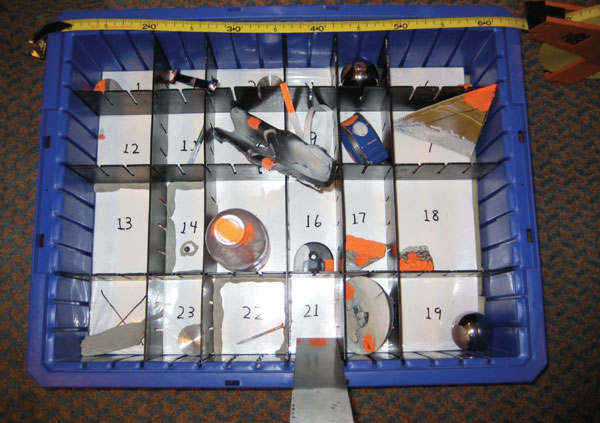

Figure 2: Collection of FOD items used by researchers in evaluation of detection capabilities
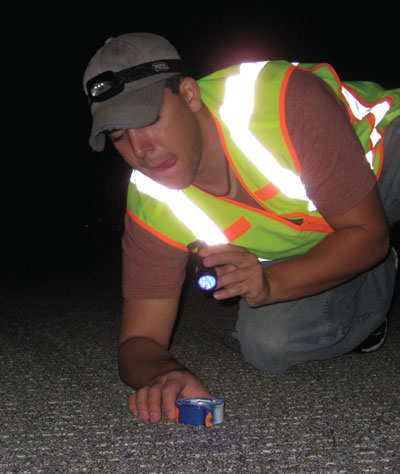

Figure 3: CEAT researcher positions a piece of FOD for nighttime testing
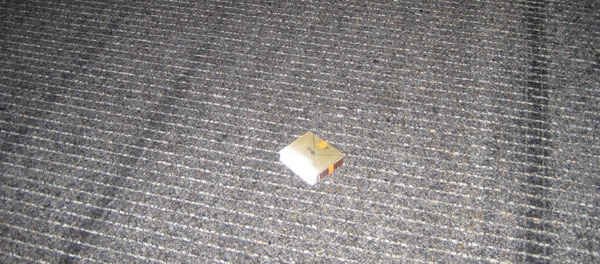

Figure 4: An example of a larger piece of FOD being used for blind detection evaluation
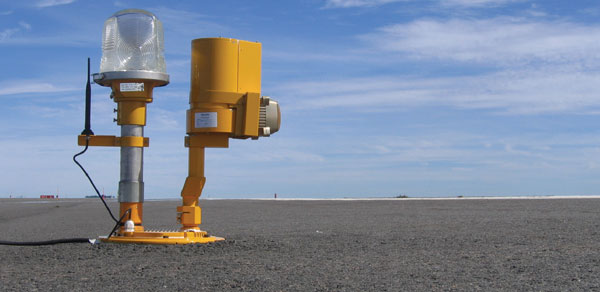

Figure 5: XSight's FODetect Surface Detection Unit in place on the edge of a runway
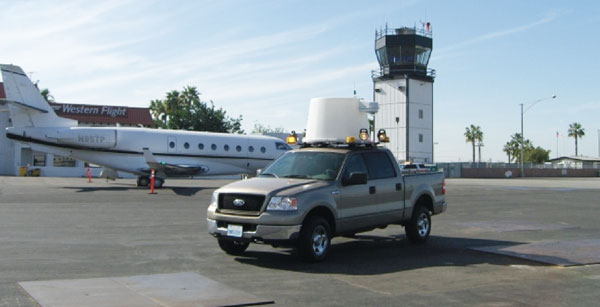

Figure 6: Mobile FOD Detection Technology developed by Trek Enterprises
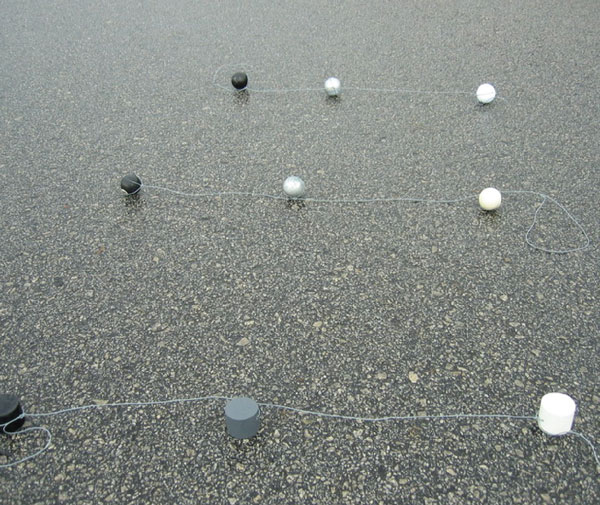

Figure 7: FOD targets of different shades used to evaluate visual detection systems
About the author
Jim Patterson Jr. is an Airport Safety Specialist with the Federal Aviation Administration’s Airport Technology Research and Development Branch. He is based at the FAA’s William J. Hughes Technical Centre in Atlantic City NJ, USA, where he manages research projects in Visual Guidance, Aircraft Rescue and Firefighting, Airport Design Safety, and Operation of New Large Aircraft. Jim has a Bachelor of Science degree in Airport Management – Flight Technology from Florida Tech, Melbourne, Florida, is an active volunteer firefighter and is also a holder of a Commercial pilot certificate and Certified Flight Instructor Certificate. Jim has worked in Airport Safety Research and Development for 14 years.
New report from International Airport Review: Securing Airports in an Evolving Threat Landscape
International Airport Review has brought together top voices from across the global aviation security sector, including International Civil Aviation Organization (ICAO), ACI World, Fraport, Qatar Civil Aviation Authority, Winnipeg Airports Authority, and Smiths Detection to examine today’s most pressing airport security challenges and emerging threats.
This expert-led report provides a strategic assessment of the vulnerabilities facing airports in 2025, encompassing cyber-attacks, drone incursions, evolving geopolitical risks, and emerging technologies.
The result is a practical, insightful guide to strengthening airport resilience, anticipating risks before they escalate, and keeping your airport off the front page
Download the report for free and stay ahead of the security curve – READ FOR FREE NOW!



